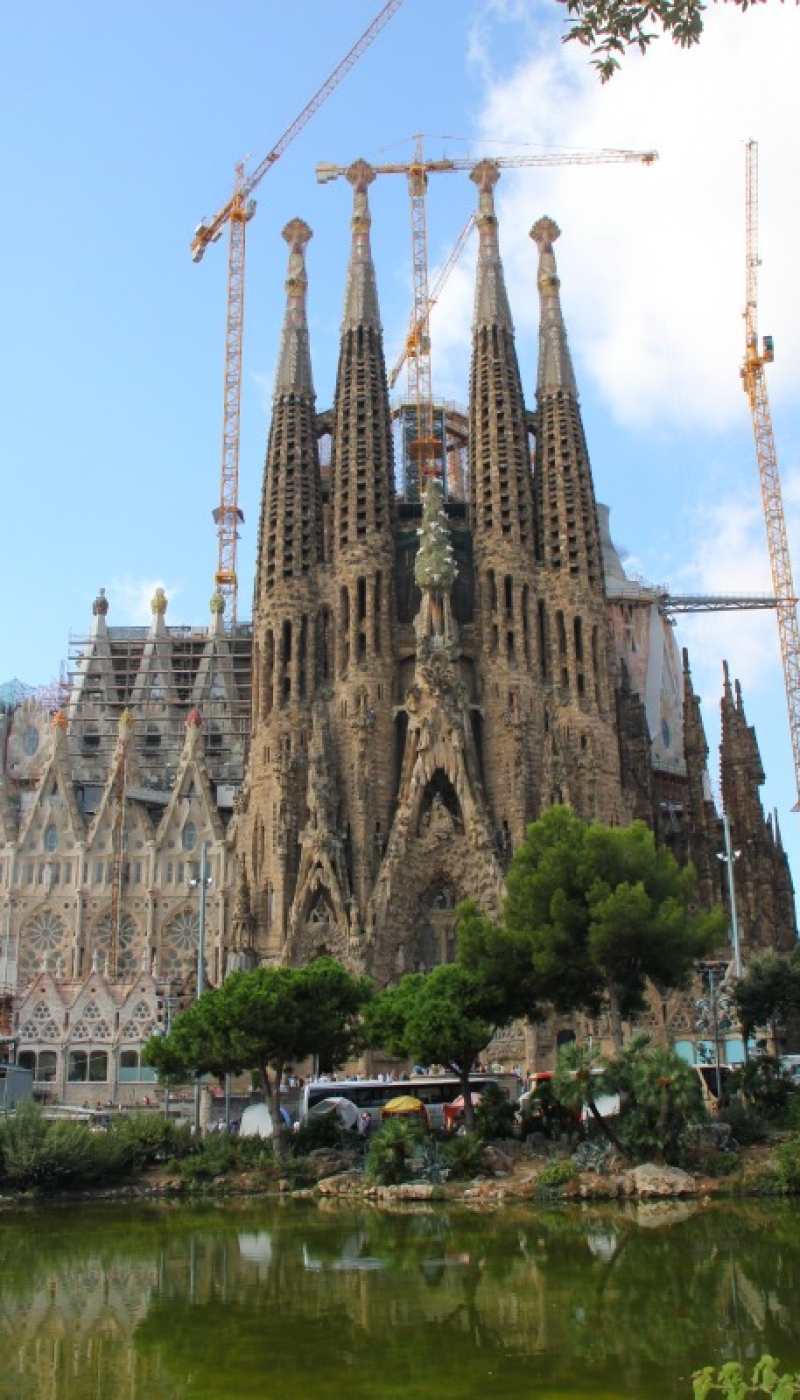Barcelona: Gaudi and Sagrada Familia
While in architecture school 45 years ago, I studied Gaudi’s life work, La Sagrada Familia. Now I’ve finally seen it for myself. I’ve discussed it with other architects and sought out two Spanish architects while on this trip to Barcelona, who told me how they feel about it. I also asked a guide who is knowledgeable about Spanish history and architecture. I’ve thought about it for several days after our group’s experience inside the structure, the pictures of which fail to capture what the space actually feels like. Provided here is an abbreviated background of this Spanish icon, which accompanies Stephanie’s photos below. Our experience with this space cannot even be described by Stephanie’s artful photography. But, rather than tell you what I think or feel about La Sagrada Familia, it would be more more meaningful for me, if our readers let me how the photos or your own personal experience in the space made you feel. Please share your comments with us by e-mail.
As it is with many works of art that stir controversy and fascination, it’s open to multiple interpretations—no two people feel exactly the same about it. One thing I personally feel with certainty is that Gaudi found a way to separate himself from the physical environment in which he lived his everyday life in Catalan. What he designed in this church and other works that remain scattered about the city in no way reflect what his predecessors or contemporaries were doing. His body of architecture is completely original and appears to have sprung from his own non-derivative thinking. He lived and worked in an Art Nouveau setting, yet ignited a movement in this period that became its own genre, Modernisme. I left this structure questioning how an artist resists pressure to conformity to training, current trends, temptations to please others in order to find acceptance. How does someone trust his own voice more than convention, moving away from ossification toward the unorthodox?
Life is this region of Spain is so closely connected to the natural world that artists and architects use plants and animal references as a recurring motif in their work. Rising out of the center of Barcelona like some magical cluster of needles and peaks left by a blowing wind and the exuberance of nature, the Sagrada Família can at first seem like piles of caves and grottos heaped on a labyrinth of stalactites, stalagmites, flora and fauna.
Soaring skyward in intricately twisting levels of carvings and sculptures, part of the Nativity facade is made of stone from Montserrat, Barcelona’s cherished mountain sanctuary and home of Catalonia’s patron saint, La Moreneta, the Black Virgin of Montserrat. Gaudí himself was fond of comparing the Sagrada Família to the soaring compact group of mountains west of town, Montserrat, where a plaque in one of the caverns reads “Lloc d’inspiració de gaudí,” the place of the inspiration of Gaudí.
The sheer immensity and scale of the structure and the energy flowing from it are staggering. The current lateral facades will one day be dwarfed by the main Glory facade and central spire—the Torre del Salvador (Tower of the Savior), which will be crowned by an illuminated polychrome ceramic cross and soar to a final height 1 yard shorter than a nearby mountain guarding the entrance to the port of Barcelona because Gaudí felt it improper for the work of man to surpass that of God.
The rippling contours of the stone façade make it look as though Sagrada Familia is melting in the sun, while the towers are topped with brightly-colored mosaics which look like bowls of fruit. Gaudí believed that color is life, and, knowing that he would not live to see completion of his masterpiece, left colored drawings of his vision for future architects to follow. Barcelona’s most emblematic architectural icon, Antoni Gaudí’s Sagrada Família, is still under construction 128 years after it was begun…and will continue for at least another 40 years. This striking and surreal creation was conceived as Christ’s story in stone, a gigantic representation of the entire history of Christianity, and it continues to cause responses from surprise to consternation to wonder. We’re not sure what to think or if we really like it. But, we want look at it and talk about it. We are very interested in your thoughts.








